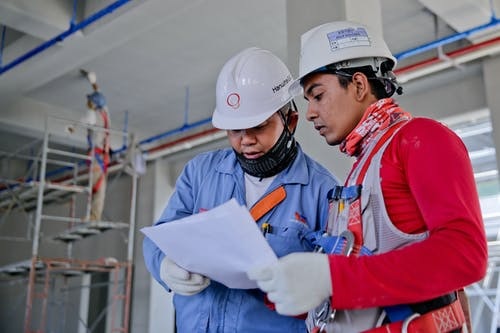Construction industry technologies continue to advance quickly, and construction professionals are adapting innovative strategies and technologies that increase efficiency, reduce costs, and enhance safety. Telematics stands at the forefront of these advances as an empowering solution that promises to revolutionize job site equipment monitoring.
This article delves into the details of equipment monitoring telematics for your construction job site.
Understanding telematics
Telematics is an interdisciplinary field that brings together telecom and informatics technologies, offering insights into a variety of applications ranging from vehicle tracking, fleet management and remote control systems to vehicle telematics devices and remote object information storage systems.
Telematics involves sending, receiving and storing information concerning remote objects — like vehicles — via communications devices.
It leverages GPS technology for location tracking, onboard diagnostics for status reporting, and mobile communications for data delivery. In the context of construction, telematics is used to monitor equipment and machinery, track their location and usage, maintain their health, and optimize overall operational efficiency.
The role of telematics in the construction industry
Telematics plays a pivotal role in the construction industry, leading to significant enhancements in various areas.
Asset tracking
Telematics allows firms to track the location of their construction equipment in real-time, preventing theft and unauthorized use. GPS-enabled telematics systems can pinpoint the exact location of assets, helping construction companies to mobilize their resources more effectively.
Preventative maintenance
By monitoring the health and performance of equipment, telematics aids in predicting potential breakdowns or malfunctions. This supports proactive maintenance, thereby reducing downtime and increasing overall productivity.
Operational efficiency
With telematics, companies can monitor how their equipment is being utilized. These insights can help companies make informed decisions on equipment deployment, leading to optimal use of resources and improved efficiency.
Safety
Telematics can warn operators about potential safety issues, such as machinery operating outside of safe parameters or hazardous conditions. This leads to a safer job site and reduces the risk of accidents.
Cost savings
By providing insights into equipment usage, maintenance needs, and fuel consumption, telematics can lead to substantial cost savings for construction companies. Better resource allocation, reduced downtime, and improved fuel efficiency all contribute to healthier bottom lines.
Benefits of implementing telematics in construction equipment monitoring
Telematics has the power to transform the way construction companies monitor and manage their equipment. Here are some of the key benefits of implementing telematics into your construction job site.
Increased productivity
Telematics aids in maximizing the use of equipment by providing data on equipment utilization. It allows for better planning and scheduling, leading to increased productivity.
Improved equipment lifespan
By facilitating preventative maintenance, telematics can extend the lifespan of your equipment. It alerts you when parts need replacing or when machinery requires servicing, ensuring optimal performance and longevity.
Reduced operational costs
Telematics can help identify inefficient practices or wasteful patterns, like excessive idling, that lead to unnecessary costs. Addressing these problems can drastically reduce your operational expenses.
Enhanced safety
With real-time monitoring, telematics can alert operators to unsafe conditions or potential equipment failure. This leads to a safer job site and minimized risk of accidents.
Better decision making
Telematics provides actionable insights that can help management make informed decisions. Whether it’s about equipment purchases, maintenance scheduling, or job site operations, data from telematics can drive better decision-making.
Easier compliance
Many regulatory bodies require detailed record-keeping on equipment usage, maintenance, and safety. Telematics can automate this process, making it easier for companies to stay compliant.
By adopting telematics in construction equipment monitoring, businesses can unlock significant benefits, boosting efficiency, safety, and profitability.
Future perspectives: Telematics and the evolution of construction sites
Telematics in construction holds great promise, with advancements set to streamline operations further, increase safety measures and optimize resource usage. When combined with emerging technologies like IoT, AI, or machine learning, telematics may revolutionize construction sites.
- Predictive analytics: The combination of telematics and AI will enhance predictive maintenance capabilities, allowing problems to be identified and addressed even before they occur, dramatically reducing downtime and maintenance costs.
- Automated operations: With IoT and machine learning incorporated into telematics systems, automated operations could become a reality. Machines could learn from data, adapt to patterns, and execute tasks without human intervention, increasing efficiency and reducing the risk of human error.
- Enhanced connectivity: As 5G and other advanced telecommunication technologies become more prevalent, the data transfer from equipment to the control station will become faster, more reliable and more secure, enabling real-time decisions and actions.
- Advanced safety measures: Future telematics could predict and prevent accidents by analyzing patterns in data and alerting to potential hazards. This could dramatically improve worksite safety.
In conclusion, the future of telematics in the construction industry is set to shape an environment that is more efficient, safer, and cost-effective, reinforcing the importance of this technology in the evolution of construction sites.
